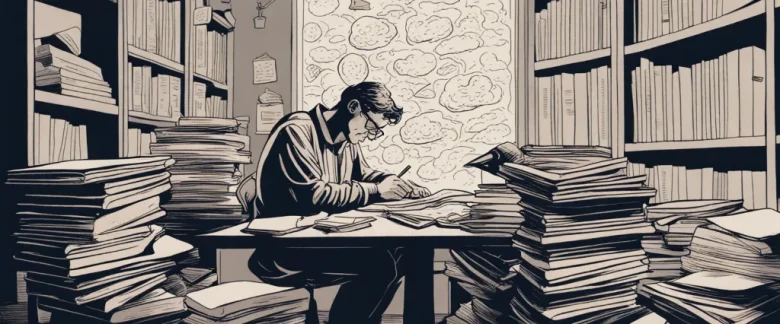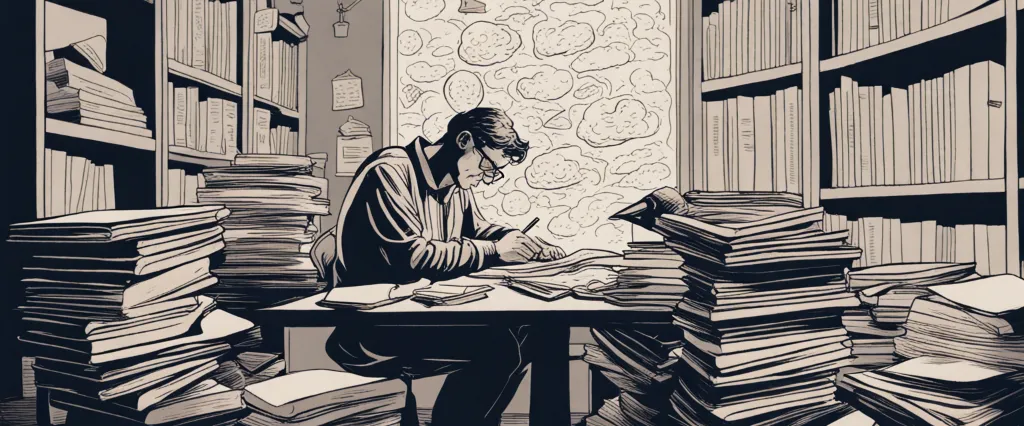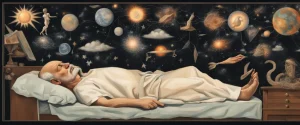In The Writers Journey by Christopher Vogler Christopher Vogler delves into the art of storytelling by exploring the universal patterns found in myths and legends. Drawing upon his experience as a Hollywood studio executive and story consultant, Vogler demonstrates how these timeless narratives can be applied to contemporary storytelling, guiding writers in crafting compelling and resonant tales. With valuable insights and practical advice, Vogler offers a profound understanding of the hero’s journey and its transformative power in literature and film.
Chapter 1:Hero’s journey as a storytelling framework for writers
Chapter 1: Hero’s Journey is the foundational chapter in Christopher Vogler’s book, “The Writer’s Journey.” It introduces the Hero’s Journey as a powerful storytelling framework used by writers to create compelling narratives. Vogler draws heavily from the work of mythologist Joseph Campbell, who identified common patterns across myths and stories from various cultures and time periods.
Vogler explains that the Hero’s Journey is an archetypal structure that resonates deeply with audiences, as it mirrors the human experience of personal growth and transformation. The author asserts that writers can leverage this structure to connect with their readers on a profound level, creating stories that captivate and inspire.
The chapter begins by outlining the primary stages of the Hero’s Journey. It starts with the Ordinary World, where the hero is introduced to the audience in their familiar environment, though they often feel unsatisfied or longing for something more. The Call to Adventure then disrupts the hero’s ordinary life, presenting them with an opportunity or challenge to embark on a transformative journey.
Vogler delves into each stage of the Hero’s Journey, including Refusal of the Call, Meeting the Mentor, Crossing the Threshold, Tests, Allies, and Enemies, Approach to the Inmost Cave, Ordeal, Reward, and Return. He explores the symbolism and psychological significance behind each stage, highlighting their importance in creating a well-rounded story.
Furthermore, Vogler analyzes numerous examples from popular films, books, and myths, illustrating how the Hero’s Journey framework manifests in different mediums and genres. Through these analyses, he encourages writers to study successful stories and understand how they utilize the Hero’s Journey elements to engage and resonate with audiences.
In conclusion, Chapter 1: Hero’s Journey sets the stage for Vogler’s exploration of the storytelling framework. It provides a comprehensive overview of the key stages and elements within the Hero’s Journey, demonstrating its potential as a powerful tool for writers to craft impactful narratives that leave a lasting impact on their readers.
Chapter 2:Archetypes and their significance in character development
In Chapter 2 of “The Writer’s Journey” by Christopher Vogler, the focus is on archetypes and their significance in character development. Vogler explains that archetypes are universal, timeless character patterns that have been used in storytelling since ancient times. These archetypes are deeply embedded in the human psyche and resonate with audiences on a subconscious level.
Vogler discusses several archetypes, beginning with the Hero archetype. The Hero is the protagonist of the story, embarking on a journey or quest to achieve a goal. Heroes possess exceptional qualities such as bravery, determination, and selflessness. They often face internal and external challenges that test their skills and character.
Another important archetype is the Mentor. The Mentor guides and supports the Hero throughout their journey, providing wisdom, knowledge, and advice. The Mentor helps the Hero develop their potential and fulfill their destiny. They often possess an otherworldly or supernatural quality, acting as a source of inspiration and guidance.
Vogler also introduces the Shadow archetype, which represents the dark side of human nature. The Shadow is the antagonist or the force that opposes the Hero. It embodies fear, evil, and chaos, and serves as a powerful source of conflict in the story. The Shadow can be a single character or a metaphorical representation of the Hero’s inner struggles and flaws.
By understanding and incorporating these archetypes into their characters, writers can tap into the collective unconscious and create compelling and relatable stories. The archetypes provide a map for character development, as they represent fundamental aspects of the human experience. They allow readers to engage with the story on a deeper level and connect with the characters’ journeys.
In conclusion, Chapter 2 of “The Writer’s Journey” explores the significance of archetypes in character development. These ancient, universal patterns provide a foundation for creating well-rounded and dynamic characters. By incorporating archetypes like the Hero, Mentor, and Shadow, writers can effectively shape their characters’ journeys and create stories that resonate with audiences.
Chapter 3:Stages of the hero’s journey and narrative structure
Chapter 3 of “The Writer’s Journey” by Christopher Vogler focuses on the stages of the hero’s journey and the narrative structure that underlies many successful stories. Vogler draws heavily from Joseph Campbell’s concept of the hero’s journey, which describes a recurring pattern in myths and stories from various cultures throughout history.
The chapter outlines the twelve stages of the hero’s journey, which represent the transformational process a hero undergoes throughout their adventure. These stages include the call to adventure, refusal of the call, meeting with the mentor, crossing the threshold, tests, allies, and enemies, approach to the innermost cave, ordeal, reward, the road back, resurrection, and finally, the return with the elixir.
Vogler emphasizes that these stages are not meant to be rigid and can be adapted to suit a writer’s needs. He also encourages writers to understand the psychological and symbolic meanings behind each stage, as they represent fundamental aspects of human experience and growth.
Furthermore, Vogler discusses the narrative structure of stories, emphasizing the importance of creating a well-structured plot. He highlights the significance of establishing an ordinary world at the beginning of a story, followed by introducing a problem or conflict that disrupts the protagonist’s life. This conflict leads to the hero’s journey and sets the stage for their growth and transformation.
Additionally, the chapter illustrates the role of archetypal characters, such as the mentor, threshold guardians, heralds, and shape-shifters, in shaping the hero’s journey. Vogler emphasizes the importance of creating compelling characters that fulfill specific narrative functions, contributing to the protagonist’s journey.
In summary, Chapter 3 of “The Writer’s Journey” explores the stages of the hero’s journey and illustrates the narrative structure that guides successful storytelling. Vogler’s insights provide a valuable framework for writers to create engaging and impactful narratives that resonate with audiences.
Chapter 4:Mythological and psychological influences on storytelling
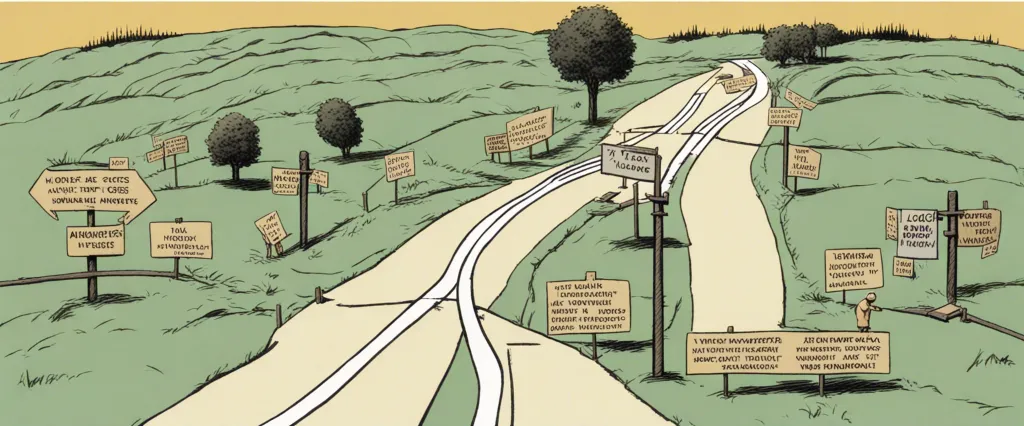
In Chapter 4 of “The Writers Journey” by Christopher Vogler, titled “Mythological and psychological influences on storytelling,” the author delves into the fundamental elements that make storytelling a powerful art form throughout history. Vogler explores the connection between mythology and psychology and how they have influenced storytelling techniques.
Vogler begins by discussing the role of mythology as a way of passing down cultural wisdom and knowledge from one generation to another. He emphasizes that stories, particularly myths, tap into the universal human experience, addressing fundamental questions about life, death, love, and the meaning of existence. By understanding these ancient mythic patterns, authors can master the art of storytelling.
The author further explores how psychology and its various theories have contributed to the development of storytelling. He discusses the works of Carl Jung, who believed in the existence of a shared collective unconsciousness, a wellspring of archetypal images and motifs that resonate with all individuals across cultures. Vogler explains that these archetypes, such as the Hero, the Mentor, the Shadow, and the Trickster, form the core of many storytelling plots and character archetypes.
Referring to Joseph Campbell’s “Hero’s Journey,” Vogler explains the significance of the hero archetype and the hero’s journey structure, which often reflects the psychological journey of self-discovery and transformation. He provides examples of well-known movies and novels that follow this ancient structure, highlighting its universality and appeal to audiences.
By incorporating these mythological and psychological influences into their stories, authors can tap into the collective unconscious and create narratives that resonate deeply with readers or viewers. Vogler emphasizes the power of storytelling to touch upon both personal and universal aspects of the human experience, allowing individuals to connect with their own inner selves and find meaning in the world around them.
In essence, Chapter 4 of “The Writers Journey” delves into the symbiotic relationship between mythology, psychology, and storytelling, emphasizing the importance of understanding these influences to create narratives that resonate with audiences on a profound level.
Chapter 5:Character transformation and the hero’s inner journey
Chapter 5 of “The Writer’s Journey” by Christopher Vogler explores the concept of character transformation and the hero’s inner journey in the context of storytelling. The chapter delves into the psychological growth and changes experienced by the hero throughout their adventure, providing valuable insights for writers seeking to create compelling and relatable characters.
Vogler begins by emphasizing that the hero’s transformation is a crucial element of the storytelling process, as it not only keeps the audience engaged but also allows them to empathize with the character. He explains that this transformation occurs on both external and internal levels, with the latter being the focus of this chapter.
The hero’s inner journey is often triggered by an external event or crisis, which disrupts their normal life and forces them to embark on their adventure. This event acts as a catalyst for change, pushing the hero to reassess their beliefs, confront their fears, and undergo personal growth. Vogler goes on to discuss key aspects of the hero’s transformation, including the acquisition of new skills and knowledge, the shedding of limiting beliefs, and the development of greater self-awareness.
Furthermore, the chapter highlights the significance of the hero’s emotional and psychological development. Vogler explains that heroes often experience various stages of emotional turmoil such as fear, doubt, and despair during their journey. These trials not only make the hero more relatable but also allow the audience to witness their growth and resilience in the face of adversity.
In conclusion, Chapter 5 of “The Writer’s Journey” emphasizes the importance of character transformation and the hero’s inner journey in storytelling. By understanding the psychological growth of the hero, writers can create more engaging and dynamic characters that resonate with their audience.
Chapter 6:The role of mentors and allies in the hero’s journey
In Chapter 6 of “The Writer’s Journey” by Christopher Vogler, the role of mentors and allies in the hero’s journey is discussed. Vogler emphasizes the significance of these characters in guiding and assisting the hero throughout their transformative journey.
A mentor is a wise and experienced individual who provides guidance and teachings to the hero. They often possess special knowledge or possess skills that the hero lacks. Mentors are often older, symbolizing wisdom gained through experience. They aid the hero by giving them advice, training, or magical tools that will aid in their quest. Furthermore, the mentor prepares the hero for the challenges and obstacles they will face, inspiring them to embrace their calling.
Allies, on the other hand, are companions or friends that the hero encounters during their journey. These characters often have specific abilities, knowledge, or resources that complement the hero’s skills and aid them in their quest. Allies provide moral support, encouragement, and practical assistance to the hero, serving as important sources of strength and motivation.
Both mentors and allies serve multiple functions within the hero’s journey. They provide the hero with the guidance and support necessary for personal growth and transformation. Mentors also act as a source of supernatural aid, whereas allies offer companionship and reinforcement during challenging times. By aiding the hero along the way, mentors and allies help prepare them for their ultimate confrontation with the villain or antagonist.
In summary, mentors and allies play crucial roles in the hero’s journey, guiding and supporting the hero in their quest. Their presence ensures the hero’s personal growth, adds depth to the narrative, and helps the hero overcome obstacles on their path to eventual success.
Chapter 7:Challenges, tests, and obstacles in the hero’s quest
Chapter 7 of “The Writer’s Journey” by Christopher Vogler discusses the essential element of challenges, tests, and obstacles in the hero’s quest. This chapter emphasizes the importance of these challenges in forming the hero’s character and propelling the narrative forward.
Vogler begins by highlighting the purpose of challenges in the Hero’s Journey. He explains that obstacles create tension, intensity, and suspense in the story, drawing readers in and keeping them engaged. Challenges serve multiple functions, such as testing the hero’s skills, knowledge, and courage, as well as revealing their moral and ethical qualities.
The author describes three types of challenges that heroes commonly face: physical, emotional, and intellectual. Physical challenges involve battles, fights, or physical feats that require the hero to overcome their limitations. Emotional challenges include moments of doubt, fear, or grief, forcing the hero to confront their inner demons. Intellectual challenges involve riddles, puzzles, or complex problem-solving scenarios that require the hero to display their wit and intelligence.
Vogler stresses that challenges should be meaningful and relevant to the overall story. They should not be arbitrary but should arise naturally from the hero’s journey. These challenges should also escalate in difficulty as the story progresses, pushing the hero to their limits and forcing them to grow and evolve.
Furthermore, the author discusses the concept of the “threshold guardian,” a character or obstacle that blocks the hero’s progress and must be overcome to proceed on the quest. These guardians can be minor or major characters, and their purpose is to give the hero an opportunity to prove their worthiness or readiness for the ultimate goal.
In conclusion, Chapter 7 of “The Writer’s Journey” highlights the significance of challenges, tests, and obstacles in the hero’s quest. These challenges not only provide excitement and tension but also shape the hero’s character and drive the narrative forward. It is through the overcoming of these challenges that the hero grows and transforms, ultimately leading to the fulfillment of their quest.
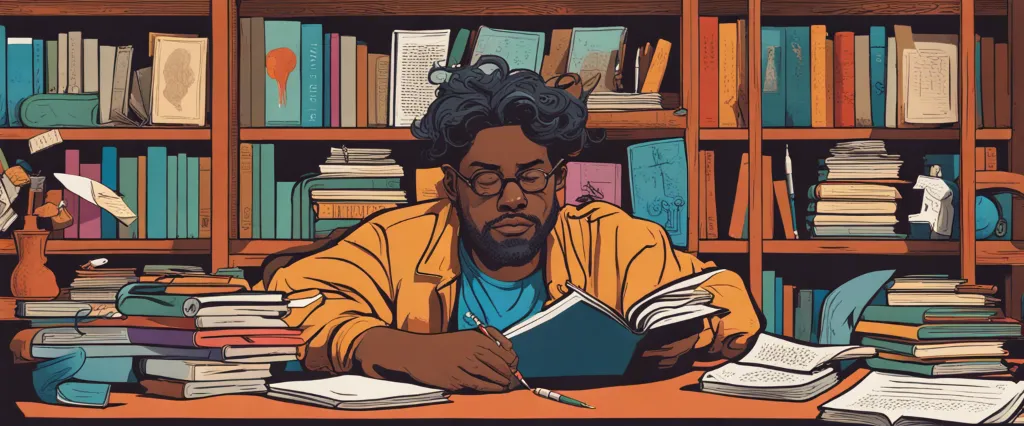
Chapter 8:Crafting compelling narratives with depth and universal appeal
Chapter 8 of “The Writer’s Journey” by Christopher Vogler explores the elements necessary for crafting compelling narratives with depth and universal appeal. Vogler emphasizes the importance of the Hero’s Journey, a narrative structure that has been used throughout history and resonates with audiences on a fundamental level.
The author begins the chapter by discussing the significance of archetypes in storytelling. Archetype characters, such as the Hero, Mentor, and Shadow, represent universal human traits and experiences. By incorporating these archetypes into our narratives, we tap into the collective unconscious and create stories that deeply resonate with readers.
Vogler also addresses the concept of mythic depth, which refers to the incorporation of universal themes and symbols into a story. By tapping into the collective unconscious, a storyteller can create a narrative that transcends cultural barriers and speaks to fundamental human experiences. This depth is achieved by infusing the story with symbolism, such as the use of dreams, rituals, or sacred objects, which invoke strong emotions and connect the audience to the underlying themes.
Additionally, the chapter explores the role of polarity and balancing opposites in creating compelling narratives. Vogler explains that conflicts between opposing forces, like life and death or light and dark, add tension and intrigue to the story. By exploring these opposing elements, writers can delve into the complexity of human nature and create multi-dimensional characters and narratives that resonate with the reader.
In summary, Chapter 8 of “The Writer’s Journey” delves into the crafting of narratives with depth and universal appeal. Vogler emphasizes the significance of archetypes, mythic depth, and polarity in storytelling. By incorporating these elements, writers can create narratives that tap into the collective unconscious, evoke profound emotions, and connect with audiences on a fundamental level.
After Reading
In conclusion, Christopher Vogler’s book “The Writer’s Journey” serves as an indispensable guide for both aspiring and seasoned writers. With his comprehensive analysis of Joseph Campbell’s hero’s journey and its application in storytelling, Vogler offers valuable insights and techniques to create compelling and engaging narratives. By incorporating archetypal characters, plot structures, and mythological patterns, writers can craft stories that resonate with universal themes and captivate readers. Additionally, Vogler emphasizes the importance of character development, the balance of internal and external conflicts, and the significance of transformation within the hero’s journey. Overall, “The Writer’s Journey” is an invaluable resource that equips writers with the tools and knowledge to create impactful and timeless stories.
1. Story Genius: How to Use Brain Science to Go Beyond Outlining and Write a Riveting Novel” by Lisa Cron – This book explores the cognitive and emotional aspects of storytelling, diving deep into the core principles of creating captivating narratives.
2. “Save the Cat! Writes a Novel: The Last Book On Novel Writing You’ll Ever Need” by Jessica Brody – Drawing inspiration from the classic screenwriting guide “Save the Cat!,” this book provides a step-by-step framework for crafting compelling novels, covering everything from character development to plot structure.
3. Story: Substance, Structure, Style, and the Principles of Screenwriting” by Robert McKee is a revered classic that explores the art of storytelling for screenwriters. It delves into the intricacies of character development, plot structure, and narrative techniques, providing invaluable insights for aspiring screenwriters.
4. “The Hero with a Thousand Faces” by Joseph Campbell – Regarded as a classic, this book delves into the many archetypes and mythological themes that can be found in storytelling throughout history, shaping our understanding of narratives and their universal appeal.
5. The Anatomy of Story: 22 Steps to Becoming a Master Storyteller” by John Truby – By presenting a comprehensive story structure model, Truby offers a detailed breakdown of the key components that make up a great story, from creating memorable characters to weaving complex plotlines.
